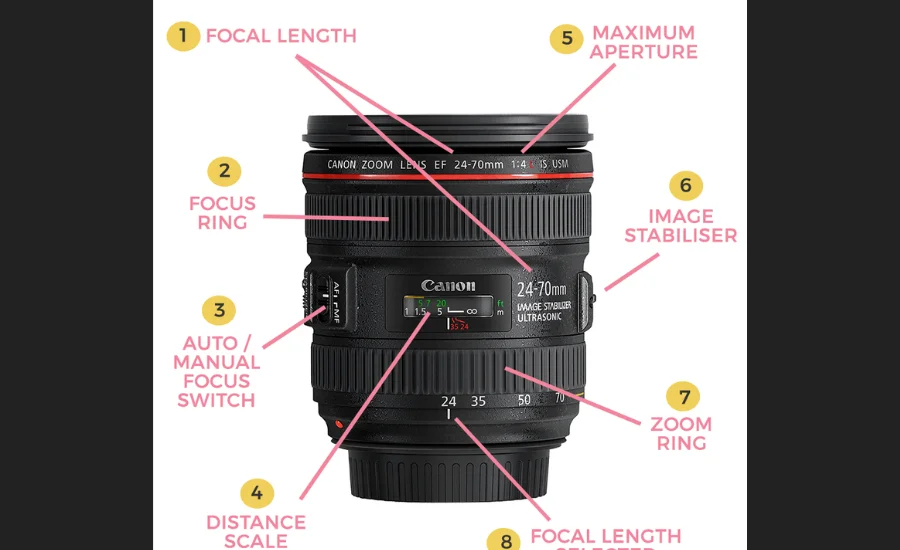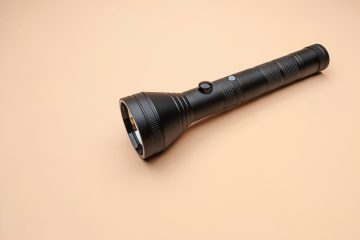Camera lenses are one of the most important purchases a photographer can make. High-quality glass allows light to be gathered and focused, and different lens types enable capturing scenes and subjects in unique ways. Whether choosing lenses optimized for landscapes, portraits, macro photography or speciality genres, understanding the specialized uses of various focal lengths is essential for successful image-making.
This guide will explore the applications of common lens categories like wide angles, zooms, telephotos and macros so readers can select optics best suited to their photographic passions and goals. From capturing expansive vistas to revealing intimate close-up details, choosing the right lens is key to creative expression. Let’s dive into exploring how lenses can expand photographic possibilities.
Importance Of Camera Lenses
Camera lenses play an incredibly important role in photography. They gather light from the scene and focus it onto the camera sensor or film, allowing an image to form. The quality of the glass used in the lens construction directly impacts critical image quality factors like sharpness, colors and contrast. Higher-quality lenses result in better-looking photos.
Furthermore, different lens focal lengths allow photographers versatile capabilities like zooming, capturing landscapes or doing macro photography. Creative features built into lenses fuel imaginative control over perspective and depth of field effects. Professional-grade lenses are often essential for commercial applications as well. Overall, utilizing the right lens is key to fully exploiting a camera’s potential for both technical and creative image-making. Lenses should be viewed as long-term investments that can be used across multiple camera systems over many years.
Wide-Angle Lenses
Wide-angle lenses have a focal length typically ranging from 15mm-35mm and allow photographers to capture extremely expansive scenes with generous amounts of foreground area and background detail. Common uses include:
- Landscape photography – Wide angles maximize scenic vistas and environmental portraits in landscapes.
- Interior photography – Realtors and architects use wide lenses to fully capture interior rooms and spaces.
- Architecture photography – Wide angles are ideal for getting full buildings or structures in frame from up close.
- Astrophotography – Stars take on a dramatic effect with wide lenses used to photograph night skies and the Milky Way.
- Street photography – Wide angles let street photographers discreetly capture environments and interactions.
- Real estate videos – Vloggers prefer wide lenses to show off property spaces in walkthrough tours.
Standard Zoom Lenses
Versatile zoom lenses with focal lengths between 24mm-105mm capture balanced perspectives for everyday use. They are well-suited for:
- Family photography – Standard zooms are convenient for snapshots of kids, events and portraits.
- Travel photography – Their flexibility works well for capturing landscapes, architecture and street scenes while traveling light.
- Journalism – Photojournalism and documentary photographers use standard zooms for candid environmental shots.
- Social media content – Creators prefer zooms for flexible content shots across different genres and compositions.
- Wedding photography – Versatile standard lenses double for both candid and formal ceremony coverage.
- YouTube videos – Creators film vlogs and tutorials using mid-range zooms to frame themselves and their subjects.
Telephoto Lenses
Longer telephoto focal lengths between 70 mm and 500 mm enable close-up photography from a distance. Common applications include:
- Wildlife photography – These lenses make it possible to closely capture animals without disturbing them.
- Sports photography – Photographing fast-paced games requires capable long telephotos.
- Portraiture – Telephotos produce flattering images by compressing perspectives and minimizing flaws.
- Nature photography – Long lenses help photograph details like trees, flowers, and insects from safe distances.
- Bird photography – Capturing small, fast-moving avian subjects demands precise telephoto optics.
- Astronomy – Taking detailed photos of celestial objects requires specialized telephoto lenses.
- Paparazzi – Long telephotos let photographers discreetly capture public figures from afar.
Macro Lenses
Lenses allowing extremely close focusing distances of 1:1 magnification or higher are well-suited for:
- Product photography – Macro lenses produce detailed professional shots of small goods and jewelry.
- Food photography – Closely capturing recipes requires macro capabilities to showcase textures and plating.
- Close-up nature photography – Macro lenses reveal amazing details in plants, insects and landscapes.
- Forensics – Crime scene photographers utilize macros to document trace evidence and details.
- Medical imaging – Healthcare photogs use macros to capture patient specimens.
- Art reproduction – Museums employ macro lenses to photograph fine artwork and documents
Specialty Lenses
More unique lenses expand photographic possibilities:
- Fish-eye lenses deliver immersive 180-degree hemispherical views used by realtors, product photographers and adventure content creators.
- Tilt-shift lenses mimic miniature scenes and control perspective for architecture, product and still-life photography.
- Circular fisheye lenses capture full 360 panoramic views used by landscape photographers or geographers.
- Mirror lenses capture unusual refraction effects utilized by photographers seeking new creative expressions.
- Lenses designed for specialized camera mounts like C-mount or F-mount lenses open up macro worlds for microscopy or industrial inspection use cases.
You May Also Read: Best Camera Lenses For Canon Rebel t7
Conclusion
In conclusion, camera lenses have evolved to fulfill many diverse roles through their varied focal lengths and specializations. Wide angles allow immersive environmental capturing, zooms provide flexibility, telephotos empower close observation from afar, and macros unlock microscopic realms. Specialty lenses further expand creativity.
With an understanding of how lenses can optimize different genres, photographers can select optics tailored to their personal style and subject matter interests. Whether for landscapes, architecture, weddings, travel, wildlife, astrophotography or more, choosing the right tools allows vision to be fully realized. Mastering a set of complementary lenses unlocked endless expressive potential. Continued learning helps photographers employ new focal lengths and unlock creative windows into our world.
FAQs
Q: What is the difference between a prime lens and a zoom lens?
A: Prime lenses have a fixed focal length, while zoom lenses have a range of focal lengths they can cover, letting you zoom in or out without changing lenses.
Q: When should someone use a telephoto lens vs a wide-angle lens?
A: Telephoto lenses are good for close-ups or distant subjects, while wide-angle lenses can include more of the surrounding area in shots of landscapes, interiors, architecture etc.
Q: What is the minimum focal length considered a macro lens?
A: Most define macro lenses as those capable of 1:1 magnification or better, showing subjects life-size or larger on the sensor/film. This is usually 50mm or less.
Q: How do fisheye lenses differ from other wide-angle lenses?
A: Fisheye lenses, especially circular fisheye, have an extremely wide focal length (often less than 15mm) that captures hemispherical, domed or distorted images with a very wide 180-degree+ field of view.
Q: What are some common uses of tilt-shift lenses?
A: Tilt-shift lenses are used to manipulate depth of field for product, food or close-up photography. They can also be used to correct or introduce perspective distortion in architectural shots.




